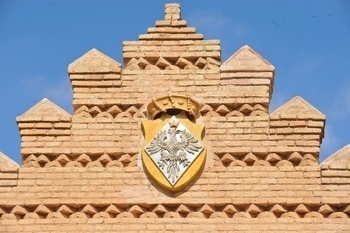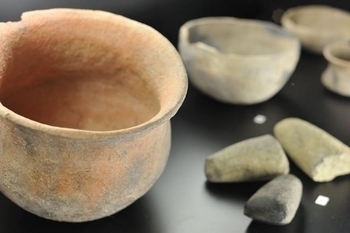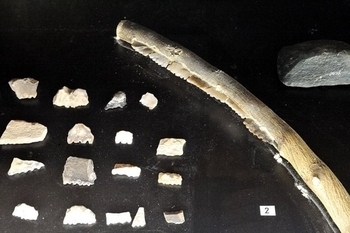Museo Municipal, Palacio Barón de Benifayó in San Pedro del Pinatar
 The Municipal Museum of San Pedro del Pinatar
The Municipal Museum of San Pedro del Pinatar
At the end of the 19th century San Pedro del Pinatar began to acquire a reputation as being THE place for the wealthy and elite of the city of Murcia to spend the hot months of summer, due in no small part to the presence of Pedro Pagán y Ayuso, Mayor of Murcia in 1874, and his wife Leonor Guerra, the darling of Murcia’s intelligentsia.
Famous for her literary salons, she gathered the élite of Murcia around her, including Cánovas del Castillo (President of Spain 1875-76), the Baron of Benifayó and Emilio Castelar (president 1873-74).
 Following her lead, other wealthy families began to build their summer residences in San Pedro del Pinatar, including the Barón de Benifayó himself, and his house, which became known as the Casa de Rusa when it was inhabited by a Russian lady for many years, remains today one of San Pedro´s most emblematic landmarks.
Following her lead, other wealthy families began to build their summer residences in San Pedro del Pinatar, including the Barón de Benifayó himself, and his house, which became known as the Casa de Rusa when it was inhabited by a Russian lady for many years, remains today one of San Pedro´s most emblematic landmarks.
Don Julio Falco d'Adda, the Barón de Benifayó, was a descendant of an important Italian family, the Saboya family, and very loosely related to various noble Spanish families.
 In 1878, he contracted architect, Lorenzo Álvarez Capra (1848-1901), renowned for his innovative constructions and constant development, to build him a house in San Pedro del Pinatar. Álvarez Capra's work vacilated between eclecticism influenced by the French schools to the neo-mudejar styling which was popular with the designers of the day in Madrid.
In 1878, he contracted architect, Lorenzo Álvarez Capra (1848-1901), renowned for his innovative constructions and constant development, to build him a house in San Pedro del Pinatar. Álvarez Capra's work vacilated between eclecticism influenced by the French schools to the neo-mudejar styling which was popular with the designers of the day in Madrid.
The design in San Pedro is an eclectic combination, a palatial residence with an almost mediaeval fortress-style design, complete with towers and many of the characteristics exhibited by the architect in the Exposición Universal in Sevilla in 1873.
 Today, his house is the seat of the municipal museum in San Pedro del Pinatar, which houses a collection of artefacts relating to the history of the town ranging from fossils found in the area, through the artefacts recovered from a number of subaquatic excavations, the Roman pieces uncovered during land excavations at the La Raya Roman Villa site, to tools and equipment used in the daily lives of the workers and fishermen who lived and worked in this area.
Today, his house is the seat of the municipal museum in San Pedro del Pinatar, which houses a collection of artefacts relating to the history of the town ranging from fossils found in the area, through the artefacts recovered from a number of subaquatic excavations, the Roman pieces uncovered during land excavations at the La Raya Roman Villa site, to tools and equipment used in the daily lives of the workers and fishermen who lived and worked in this area.
The final section of the museum houses collections of toys and cinema memorabilia.
The eclectic mix is perfectly suited for the location in which it is housed, and part of the display includes a glimpse into the world of the Baron himself, with one of the rooms austerely furnished in a style contemporary with the building .
The museum is open as follows:
 October to April: Tuesday to Friday 10.00 to 13.00 and 17.00 to 19.00, Saturdays and Sundays 10.00 to 13.00.
October to April: Tuesday to Friday 10.00 to 13.00 and 17.00 to 19.00, Saturdays and Sundays 10.00 to 13.00.
May to September: Tuesday to Friday 10.00 to 13.00 and 18.00 to 20.00, Saturdays and Sundays 10.00 to 13.00.
Telephone: 968 187596.
If you are travelling to visit the Museum, it is always woth checking first with the tourist office that it will be open (968 182301).








































